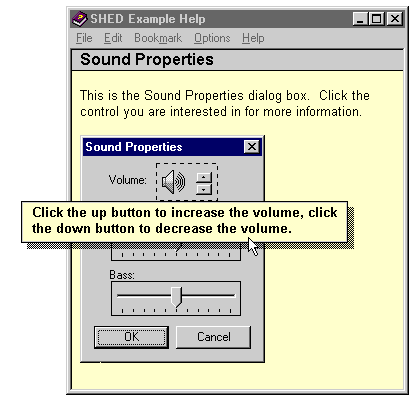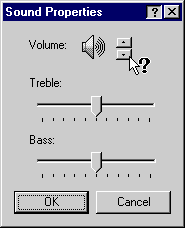Direct Manipulation Opportunities
In theory, any dialog box that is used to give a command or set a property could be eliminated by direct manipulation. In practice, there are simply too many commands and attributes to make this objective possible. However, before you create a new dialog box, ask yourself whether you can come up with a way to perform the action directly.
TIP
Before you create a new dialog box, ask yourself whether you can create a way to perform the action directly.
I've found that one specific type of dialog box is consistently a prime candidate for elimination with direct manipulation. In the above list of examples, I intentionally omitted one of my favorite forms of direct manipulation. In Windows 3.1 Help systems, Help authors used to create segmented hypergraphics (also called SHED bitmaps) of windows to allow the user to click a region on the graphic to get help. Such a Help window for a typical dialog box would look like the following:

Let's think this situation through. You need help for a dialog box on the screen, so you ask for help—the Help system then covers the dialog box with a large Help window with a picture of the dialog box so that you can click the picture to get specific help. This technique doesn't make any sense. Why should the Help system display a picture of the dialog box when the dialog box is already on the screen? Why not eliminate the Help window and ask the dialog box for help directly? This is the technique used in Windows 98 with the What's This? button.

In the first example, the Help window replicates the dialog box it provides help for, but a better solution, as shown here, is to obtain the same information from the window directly. I believe this principle applies in general. Whenever the appearance of a dialog box mimics the window it supports, that dialog box can probably be eliminated by direct manipulation. Some of the earlier mentioned examples that follow this principle are the direct file rename feature used in Windows Explorer, the toolbar editor used in Visual C++, and the table view column editor used by Outlook.
TIP
A dialog box whose appearance mimics the window it supports can often be eliminated by direct manipulation.
EAN: 2147483647
Pages: 334